Although it is more common for plantar fasciitis to appear in people over 40 years old, the condition can actually appear in people much younger.
So what can cause Plantar Fasciitis?
Here are a list of 8 of the most common causes of Plantar Fasciitis:
- Fallen or high arches
- Being overweight
- Wearing worn or non supportive footwear
- Patrticipating in high impact sports
- Long periods spent on feet
- Other medical conditions
- Pregnancy
- Age
We will now look deeper into each of these causes of plantar fasciitis, and how to manage the risks involved with each cause.
Fallen or High Arches
Having fallen or high arches can considerably increaser your chances of getting plantar fasciitis. Your foot is made up of bones and connective tissue that allow the foot to move naturally and provide adequate shock absorption as you walk or run.
When you suffer with either fallen or high arches, the foot is not aligned as it naturally should be, and this can add undue stress to areas of the foot resulting in plantar fasciitis or other foot conditions.
Fallen Arches
Fallen arches, also known as having flat feet, is when there is not enough of an arch in the underside of your foot and so more of the sole of your foot is in contact with the ground.
People who walk with fallen arches suffer from pronation which means that their ankles lean inwards towards each other and leads them to walk more on the insides of their feet. This unatural gait causes more stress on the plantar fascia tissue making it more susceptible to damage.
High Arches
As you can imagine, high arches is the opposite to fallen arches, wherby less of the sole of the foot is in contact with the ground. This causes more weight to be supported by the ball and heel of the foot.
People with high arches suffer with supination, which means that their ankles point outwards, causing the person to walk on the outsides of ther feet. Again, this unatural postion causes extra stress on the plantar fascia.
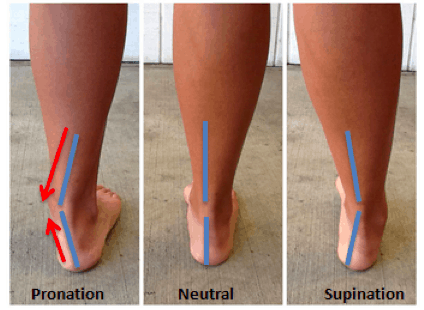
How to tell if you have high or low foot arches
One of the easiest ways to tell if you have unatural foot arches is to do the wet feet test.
Get your feet wet and then stand on a hard surface that will show your foot prints, such as a dark tile or concrete. You can even lay newspaper or brown paper on the floor and stand on it.
Now compare your footprint with the image below to determine if you have high or fallen arches.

Risk Management
If you suffer from either high or fallen arches, then you are going to want to help provide the support that is lacking in your feet.
There are several ways that you can overcome the problem, with the most common and affordable way being over the counter orthotic inserts such as heel lifts and arch supports. See a selection on our resource page
If you find that shop bought inserts are not helping, you may need to visit a foot specialist who will fit you for custom made orthotic inserts.
Beyond inserts, you may wish to look at orthotic footwear. This is where the orthotic supports are built into the shoe itself, removing the need for added inserts.
Slippers, sneakers, flip flops and dress shoes can all now be purchased with the support built in to them, and can usually be purchased from reputable shoe outlets, as well as on Amazon. It may be worth checking these out prior to looking into custom made shoes, which come with a hefty price tag.
Being Overweight
If you find you are carrying more weight than you should be, you will be putting your plantar fascia under extra pressure.
The plantar fascia tissue runs along the base of the foot from the heel bone to the toes and acts as a kind of shock absorber for the foot.
As you can imagine, the plantar fascia is hard working, supporting your whole body weight as you walk and run.
If you are overweight, the plantar fascia is having to carry an even heavier load than it should, and the extra weight can cause it to weaken or become damaged. Once this happens, it will be all the more difficult to heal, due to the added burden placed upon it.

Risk Management
If you feel that you may be overweight, then taking action to eliminate the excess will help prevent you from getting plantar fasciitis.
The most effective way to lose weight is through eating a healthy balanced diet and getting regular exercise.
Caution!
As mentioned earlier, being overweight puts added stress onto the plantar fascia. If you are going to exercise as part of your weight loss regime, be sure not to do any high impact sports that will further burden the plantar fascia.
Low impact sports such as swimming, cycling and certain yoga techniques may be more suitable than running or jogging.
Worn Out or Unsupportive Footwear
Wearing shoes that are worn out and offer no support is another major factor in people getting plantar fasciitis.
Also wearing non supporive shoes such as flip flops, high heels or even going barefoot can cause damage to the plantar fascia.
Many people are guilty of wearing a pair of shoes long past their useable life. Unfortunately, they think that because they have no holes in them, they are not worn out. This is not the case.
As we walk, we all carry ourselves differently, and our shoes adapt to our feet, and our way of walking. The area of the shoe that gets the most contact with the ground will naturally wear out quicker than the other areas.
As those high impact areas become worn, they slightly adjust the way our foot lies within the shoe, as well as how the foot lands after each step. It may be subtle, but even a partly worn heel on a shoe can adjust the pressure on our foot to such a degree that it begins to cause damage to the plantar fascia.
Runners need to pay particular attention to the lifespan of their running shoes. Not only do these shoes tend to lose their support and wear out much quicker than normal shoes, your plantar fascia is under even more stress with the high impact each running step creates.
Related Article: Can I Run With Plantar Fasciitis?

Risk Management
Your feet carry a heavy burden day in and day out. Just think about how many steps you take in a day and take a minute to consider the weight and strain that your plantar fascia is under with each and every step.
You owe it to yourself, and your poor feet, to ensure that you wear proper supportive footwear to give your feet as much support as they deserve.
Always invest in the best shoes that you can afford to buy. Footwear is so often an area that gets the least regard when it comes to spending money, and yet they provide such an essential service.
Well made, well fitting and supportive shoes will take so much of the strain off of your feet, whilst going a long way towards preventing the developement of plantar fasciitis and other foot related conditions. Also, you have the added bonus that your feet will be less likely to hurt after a long day at work.
Once you have invested in a good pair of shoes, make sure you take care of them. Allow them to air out and maybe put newspaper in them to help them dry if you have worn them a while and they are likely to be damp.
Check the soles for signs of wear and especially the heels for signs of uneven wear. If needs be, take them to be re-heeled.
A well made pair of shoes will be one of the best investments you will ever make and your feet will truly appreciate it.
Participation In High Impact Sports
People who partake in high impact sports are at a higher risk of getting plantar fasciitis due to the constant added burden they place on their feet.
Here is a list of some of the kinds of high impact sports that could be the cause of plantar fasciitis.
- Running
- Hurdles
- Basketball
- Weigh Lifting
- Skiing
- Soccer
- American Football
- Rugby
- Water Skiing
- Martial Arts
Basically, any sport that requires you to run, jump or add excessive pressure to your plantar fascia is regarded as high impact. Plantar fasciitis is a condition that affects many professional athletes due to the nature of their work. The more pressure and stress you put onto your plantar fascia, the greater the chances are that you will cause some damage to the tissue.  Risk Management If you enjoy taking part in high impact sports, then you must ensure that you take proper precautions to help prevent plantar fasciitis. As covered earlier in this article, it is essential that you invest in well made supportive footwear. With your feet taking the brunt of most of the action, you must protect and reduce the stress on the plantar fascia tissue as much as possible. Another important factor is the pre training warm up and post training cool down stretches and exercises. If you try to partake in physical sports without first gently stretching the muscles in your body, then you are likely to tear the muscles and cause both pain and injury.
Risk Management If you enjoy taking part in high impact sports, then you must ensure that you take proper precautions to help prevent plantar fasciitis. As covered earlier in this article, it is essential that you invest in well made supportive footwear. With your feet taking the brunt of most of the action, you must protect and reduce the stress on the plantar fascia tissue as much as possible. Another important factor is the pre training warm up and post training cool down stretches and exercises. If you try to partake in physical sports without first gently stretching the muscles in your body, then you are likely to tear the muscles and cause both pain and injury.
Lastly, ensure that you take adequate rest days to allow your body to rejuvinate and heal.
https://www.youtube.com/watch?v=3gdyXUlp6-A
Spending A Long Time On Your Feet
Another cause of plantar fasciitis is spending a lot of time on your feet.
Many people have occupations that require them to spend a major part of their day either standing or walking.
Some examples of the types of jobs that see people getting plantar fasciitis are:
- Doctors & Nurses
- Bar Staff
- Chef
- Waiters / Waitress
- Shop Workers
- Traffic Wardens
- Factory Workers
- Cleaners
- Fast Food Servers
- Teachers
Jobs that require you to do a lot of walking or standing will make you more likely to develop plantar fasciitis.
By being on your feet all day, the plantar fascia tissue is under constant strain and becomes weakened. This weakness makes it more susceptible to damage and eventually small tears will occur. Over time those tears will become inflammed and cause you pain.
Unfortunately, due to the nature of your job, your feet are unlikely to get the adequate rest required to allow that damage to heal, and so the plantar fascia will continue to become weaker and the damage greater.
Eventually you will get to the point where you may end up with a major tear or plantar fascia rupture which is much more painful and has a long recovery time.

Risk Management
As you have probably noticed throughout this article, it all comes back to footwear.
If you are in a job that sees you spending hour after hour, day after day, on your feet, then you really do want to have a good pair of shoes. Ideally, you should have a second pair and swap the shoes daily or every other day so that they have the chance to dry out.
Next, you want to be making sure that you take the breaks you are entitled to, and use those breaks to rest!!!
Whenever you get the chance to sit down for a minute, take it.
On your days off, ensure you find time to sit and relax. Give your feet a soak and perhaps a massage.
Other Medical Conditions
There are many medical conditions that can affect the way a person walks. When your natural walk is affected, you begin to favor one foot more than the other and so plantar fasciitis can occur.
Here is a list of some of the types of medical conditions that could possibly cause a person to develop plantar fasciitis.
- Arthritis
- Hip Pain or Replacement
- Knee Pain or Replacement
- Sciatica
- Ankle Pain
- Osteoarthritis
- Ankylosing Spondylitis
- Foot Pain
Basically any medical condition that affects the back, hips, knees or ankles, and alters the way you walk, will possibly cause you to develop plantar fasciitis.
The reason these conditions can contribute to you developing the problem is largely due to limping.
When people are in pain, they tend to transfer to the side of the body that doesn’t hurt. In the case of our feet and legs, that means limping on our better foot.
This transference of extra weight to the good foot means that the plantar fascia in that foot is put under much more strain than normal.
You may get by for a while with no problems, however, the constant added stress will eventually begin to weaken the plantar fascia in your good foot, and damage will occur.
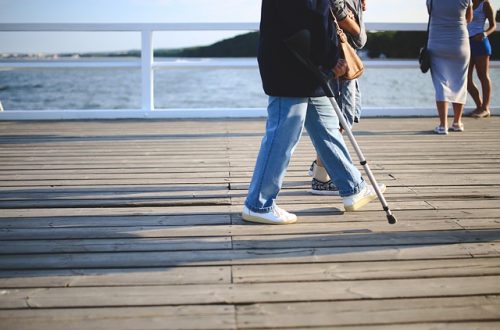
Risk Management
Dealing with any medical condition that results in daily pain is challenging. It is imperitive that you take action to prevent additional problems such as plantar fasciitis developing and adding further pain to your day.
If you find you are suffering with a condition that alters the way you naturally walk, then you must try to minimise the impact it has on your plantar fascia tissue.
If you are dealing with a short term ailment such as a sprained ankle, broken leg etc, then try to get a set of underarm crutches that will support your whole body weight, or a walking boot.
If you have a more long term condition that is causing you to favor one leg over the other, then perhaps a forearm crutch or walking cane would help to keep the extra weight off of the good foot.
If you find that you need to walk a lot during the day or for fairly long distances, consideration could be given to a mobility scooter. Certainly in some cases where the person is dealing with a degenerative disease that is unlikely to improve, such as ankylosing spondylitis or osteoarthritis, this could prove to be a very good investment.
Whatever ailment you are dealing with, the bottom line is that you need to do all you can to prevent putting unnecessary stress on to either of your feet or you risk developing plantar fasciitis.
Pregnancy
When a woman becomes pregnant, her body changes dramatically over the 9 months. Some of these changes make her more likely to develop plantar fasciitis.
During pregnancy, the body releases extra doses of the hormone known as relaxin.
Relaxin helps the body to prepare for the birth of the baby by relaxing the ligaments in the pelvis and birth canal.
Unfortunately, it also relaxes all the other ligaments around the body causing them to soften and become unstable.
As the plantar fascia is a ligamnet, it also relaxes due to this hormone release, making it softer and more liable to damage.
As you know, the plantar fascia creates the arch of the foot, and with the softening of the ligament, it is common for pregnant woment to suffer with pronation (flat feet) due to the added weight placed upon the feet.
Also, the added weight can sometimes cause the feet to swell, making it uncomfortable to wear shoes.
Many women decide to go barefoot or wear flat, wide fitting shoes during the final tri-mester of pregnancy, and so the 3 things combined – softened ligaments, flat feet and added weight – all place a considerable burden on the plantar fascia. It is due to these factors that makes plantar fasciitis such a common condition seen in pregnant women.

Risk Management
Unfortunately there is nothing a woman can do to stop mother nature releasing the relaxin hormone that is going to soften her ligamnets (and she wouldn’t want to even if she could!)
However, there are a couple of things that could help reduce the chances of damaging the plantar fascia whilst it is in this softened state.
Rest as much as possible to allow any minor damage or strain in the plantar fascia to heal.
Get your partner to massage the base of your foot, especially in the arch area to help ease the pain. If you can’t persuade him, then get him to buy you a foot massager. Just remind him that if you are off your feet due to plantar fasciitis, he will have to look after the baby when it arrives, that should do the trick!
As tempting as it may be to go barefoot, try to wear some kind of supportive footwear. If your feet have swollen, you can get supportive slippers or sandals that will help support the plantar fascia without squashing your feet.
Putting your feet in ice or wearing an ice wrap will help to reduce swelling and inflammation.
Related Article: Dealing With Plantar Fasciitis During Pregnancy
Age
Alas, it comes to us all….
1 in 10 people over the age of 40 are dealing with plantar fasciitis, and this statistic increase as the age goes up.
As we get older, the collagen in our body loses its elasticity, making it more prone to damage. Circulation problems can arise, as can obesity, which happens as we become less active.
All these factors have a detremental affect on the plantar fascia, which is why plantar fasciitis such a common ailment in older people.

Risk Management
There is nothing we can do to stop getting old, however there are things we can do to stop age taking its toll on our body.
With the degeneration of the tissue elasticity, it is important to give the plantar fascia some help with support. There are several ways you can achieve this, such as over the counter orthotic shoe insoles, orthotic footwear or arch supports.
Many older people benefit from the taking of daily supplements such as collagen to help keep joints and ligaments moving freely and promote natural healing of damaged tissue.
Remaining active and gently stretching and massaging the feet will also help with blood flow and circulation, and help limit the effects of aging. Taking gentle walks, doing yoga, or taking a fitness class can all help keep the body stronger and more supple, preventing it from becoming rigid, brittle and easily damaged.

Finally
There are many ways that a person can develop Plantar Fasciitis, but you will find that these are the most common causes.
As mentioned in the article, plantar fasciitis can affect almost anybody at any age, however it is more common the older we get.
The condition can be avoided with a little bit of forethought and proactive precautions.
Wear supportive footwear, gently stretch the plantar fascia prior to partaking in sports, sit down during rest breaks when working a full day. All of these things seem like common sense, but when life gets in the way, it’s easy for us to forget to take care of ourselves.
If you feel that you may be developing Plantar Fasciitis, the time to take action is NOW!
Read our article : 5 Steps To Recovery from Plantar Fasciitis
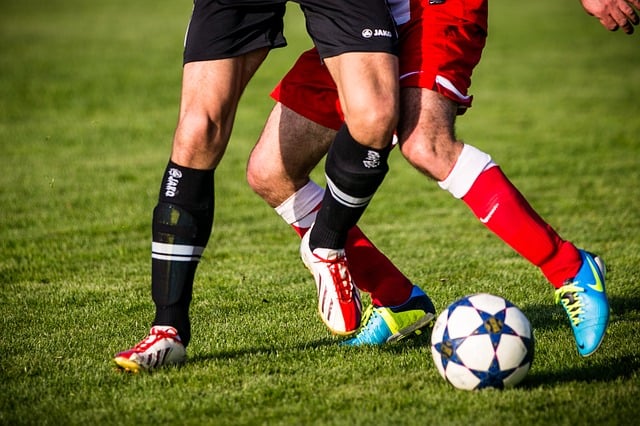


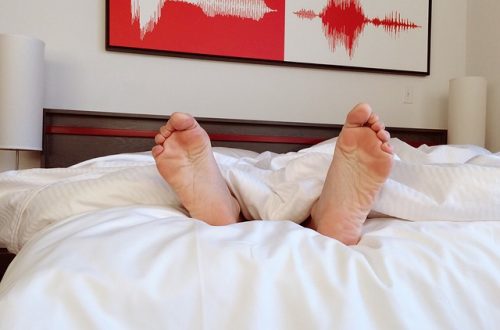
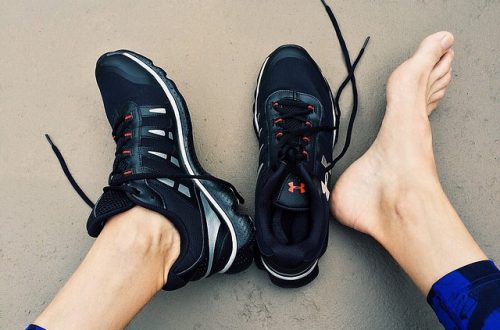

One Comment
Pingback: